Oral Anatomy and Occlusion - Mandibular Premolars
1/48
There's no tags or description
Looks like no tags are added yet.
Name | Mastery | Learn | Test | Matching | Spaced |
|---|
No study sessions yet.
49 Terms
Mandibular First Premolars - Begin Formation
1 3/4 - 2 years
Mandibular First Premolars - Eruption
10-12 years
Mandibular First Premolars - Root Completion
12-13 years
Bell shaped crown
The "bell shape" refers to the dimensions of the crown at the contact area compared to the cervical constriction.
Mandibular First Premolar - Coronal Outline (occlusal view)
diamond
Mandibular First Premolar - Mesial Outline (occlusal view)
narrow arc
has the appearance of anterior tooth
Mandibular First Premolar - Distal Outline (occlusal view)
Broader arc
Appears more like a posterior tooth
Mandibular First Premolar - Facial and Lingual heights of contour (occlusal view)
both are MESIAL to center
Mandibular First Premolar - Facial cusp slopes (occlusal view)
cross the tooth midway F/L
divide the crown in half faciolingually.
MF cusp slope is slightly shorter than DF cusp slope.
Mandibular First Premolar - Facial and lingual cusp tips (occlusal view)
slightly M to center on the crown M/D
Mandibular First Premolar - proximal contacts
located in the middle third, almost centered buccolingually (B/L).
M contact is narrower B/L than D contact
Mandibular First Premolar - unique features
transverse ridge
occlusal pits
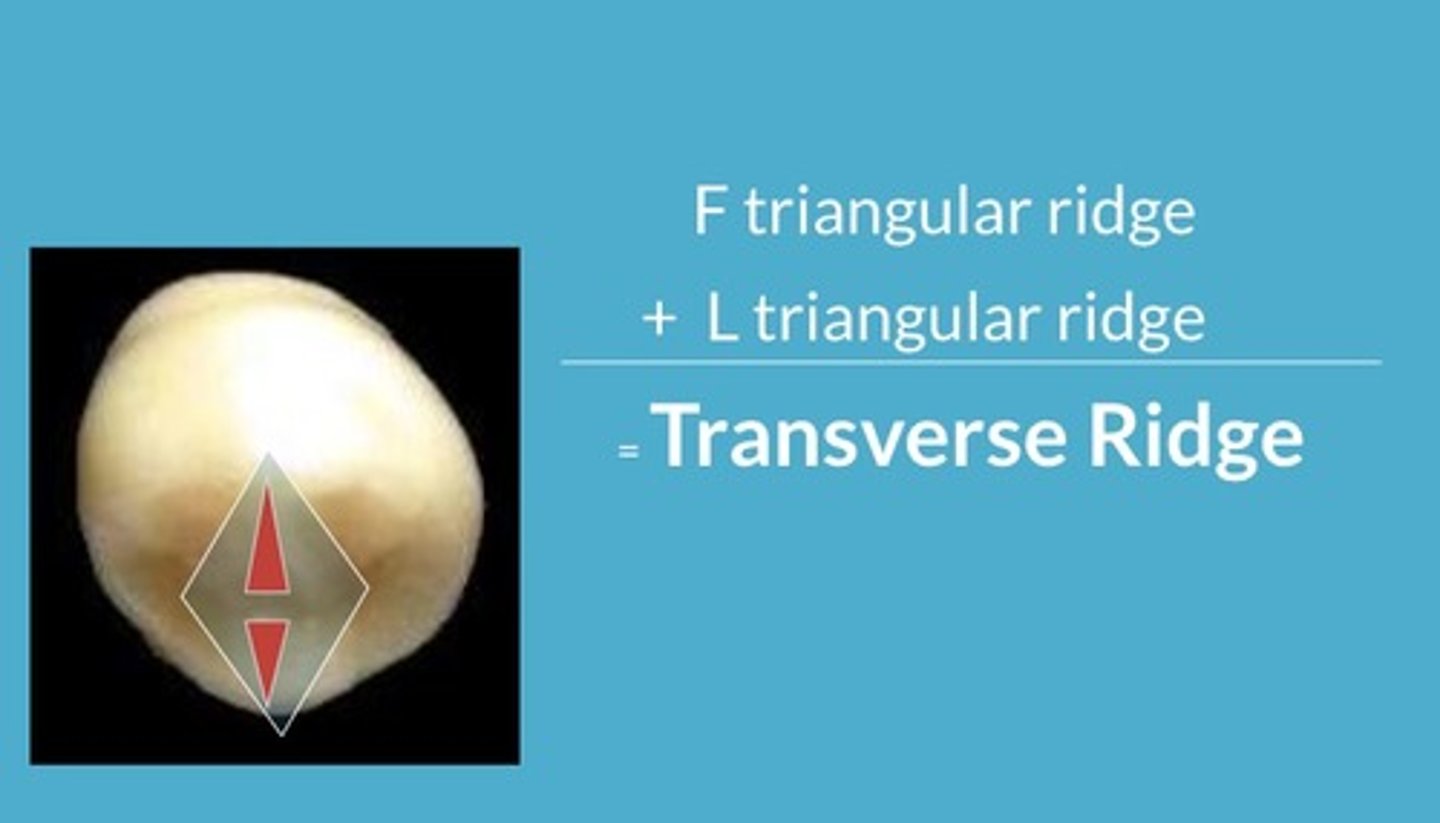
Mandibular First Premolar - Mesiolingual Developmental Groove
begins in the M pit on the occlusal surface and extends onto the ML surface of the crown and even onto the root.
Mandibular First Premolar - proximal contacts (buccal view)
M contact is located more cervically than the D contact
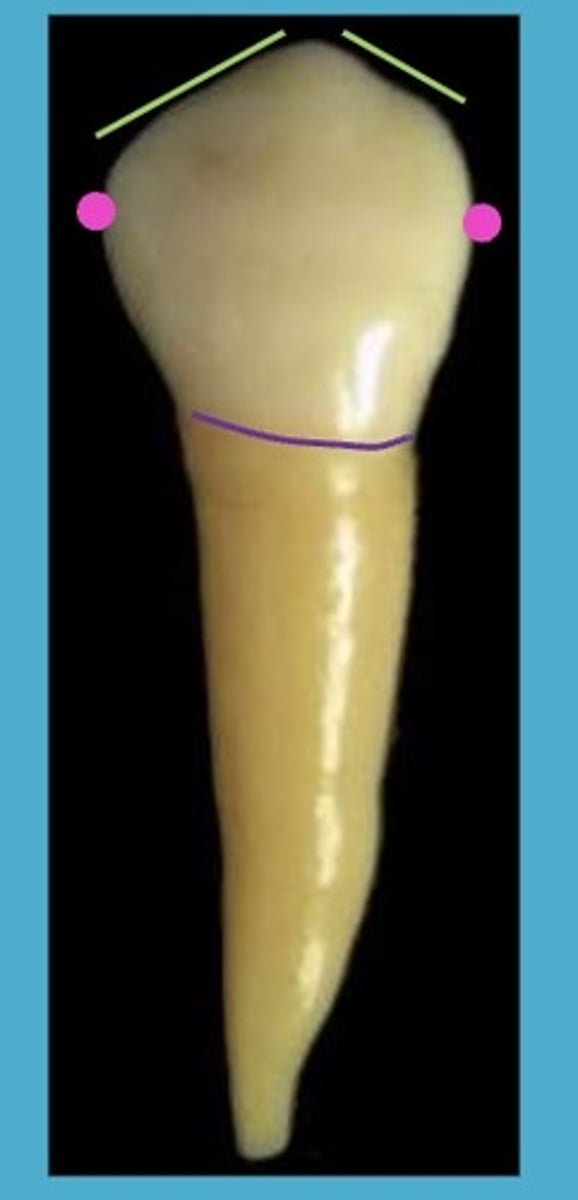
Mandibular First Premolar - location of cusp tip (buccal view)
mesial to center
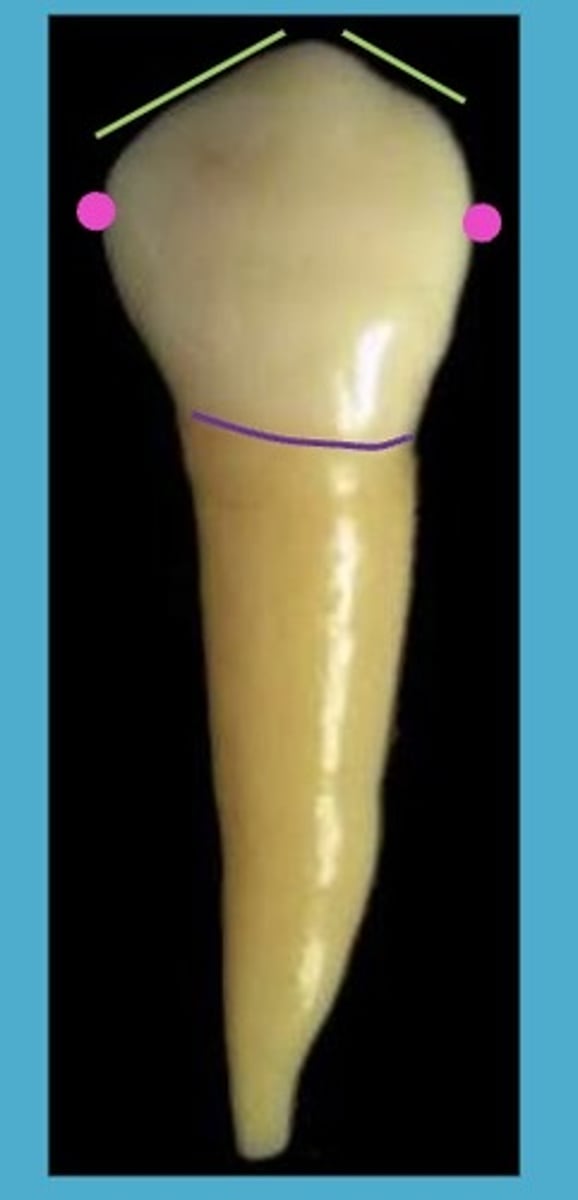
Mandibular First Premolar - length of cusp slopes (buccal view)
M < D cusp slope
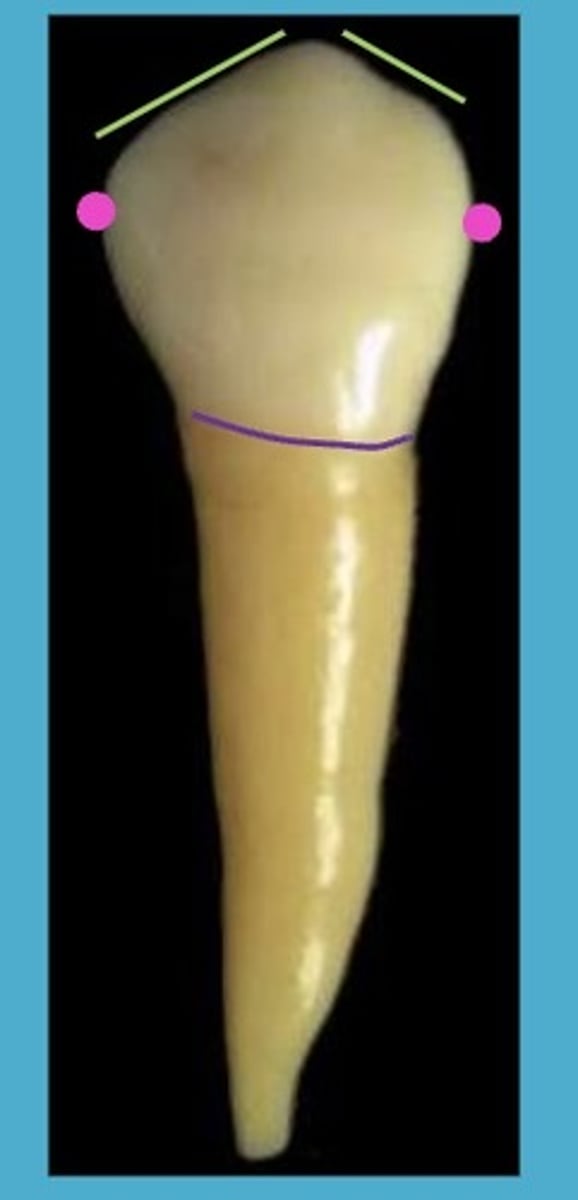
Mandibular First Premolar - curvature of CEJ (buccal view)
Less curve than anterior teeth
Mandibular First Premolar - taper of root (buccal view)
smoothly tapered, may curve at apex
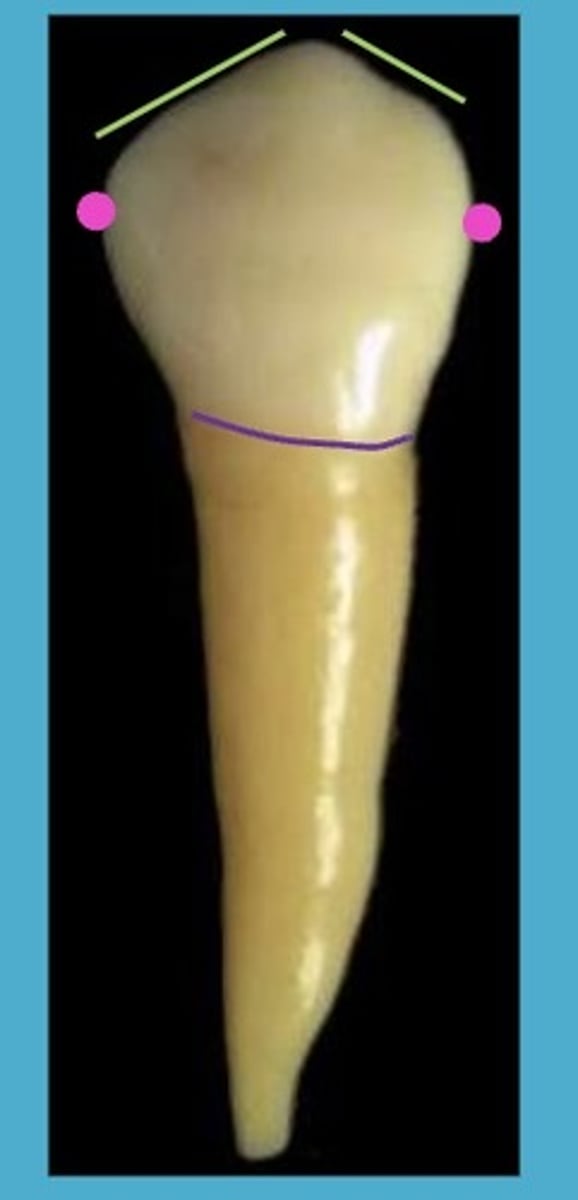
Mandibular First Premolar - taper of crown and root (lingual view)
taper to the lingual

Mandibular First Premolar - lingual cusp (lingual view)
the lingual cusp is much shorter
much of the occlusal table is visible
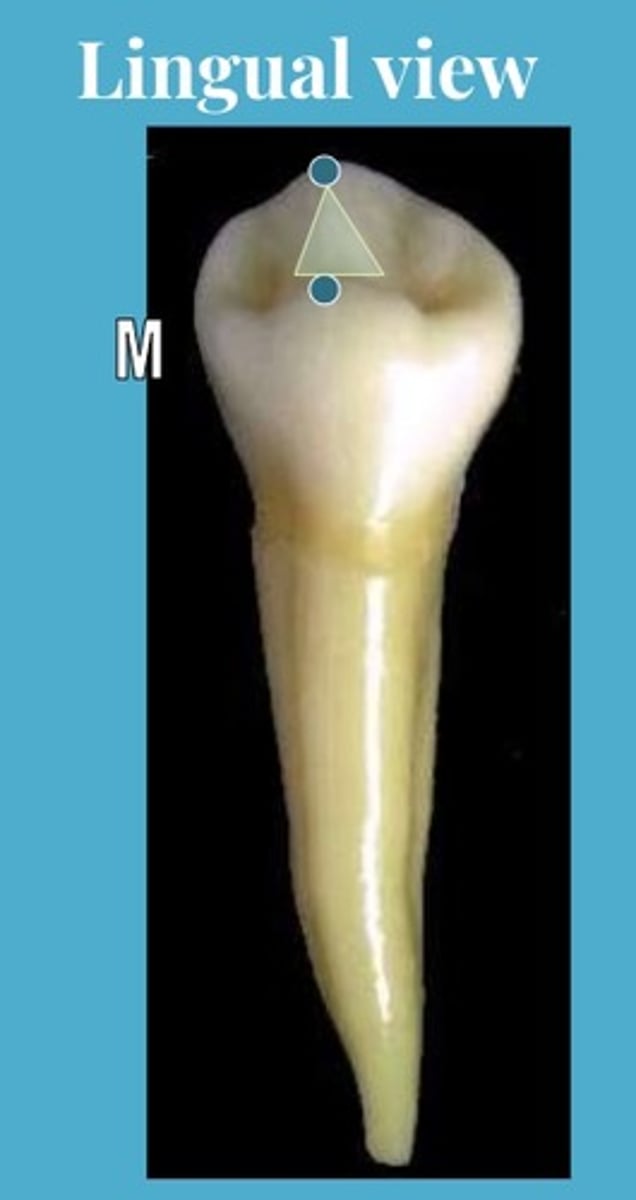
Mandibular First Premolar - buccal and lingual cusp tips (lingual view)
B and L cusp tips are Mesial to center on the crown
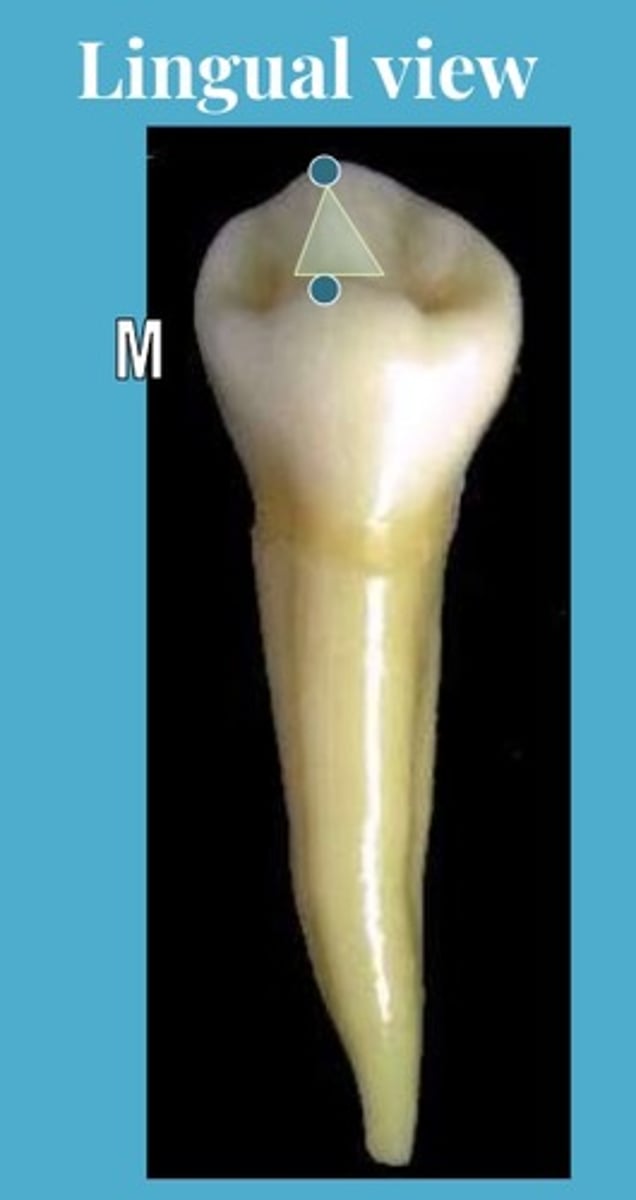
Mandibular First Premolar - buccal cusp tip location (proximal view)
centered B/L
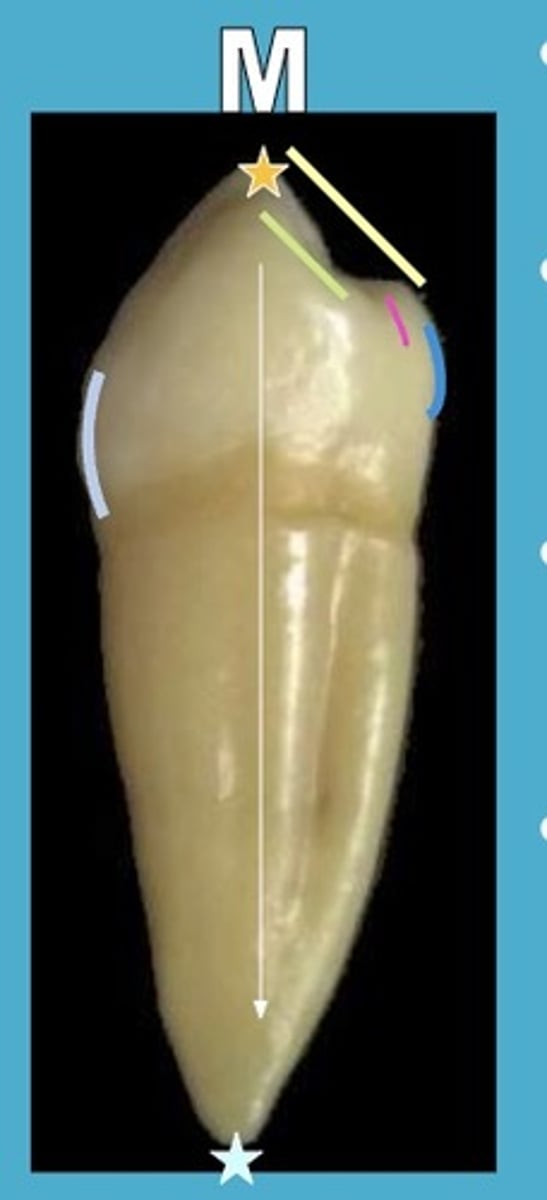
Mandibular First Premolar - ML developmental groove (proximal view)
on the M surface of crown and root
visible from the mesial

Mandibular First Premolar - buccal and lingual heights of contour (proximal view)
B: cervical 1/3
L: middle 1/3

Mandibular First Premolar - orientation of the occlusal table (proximal view)
tipped to the LINGUAL
note that the M marginal ridge parallels the occlusal table
Lingual tilt of Mandibular Premolar Crowns (see photo)
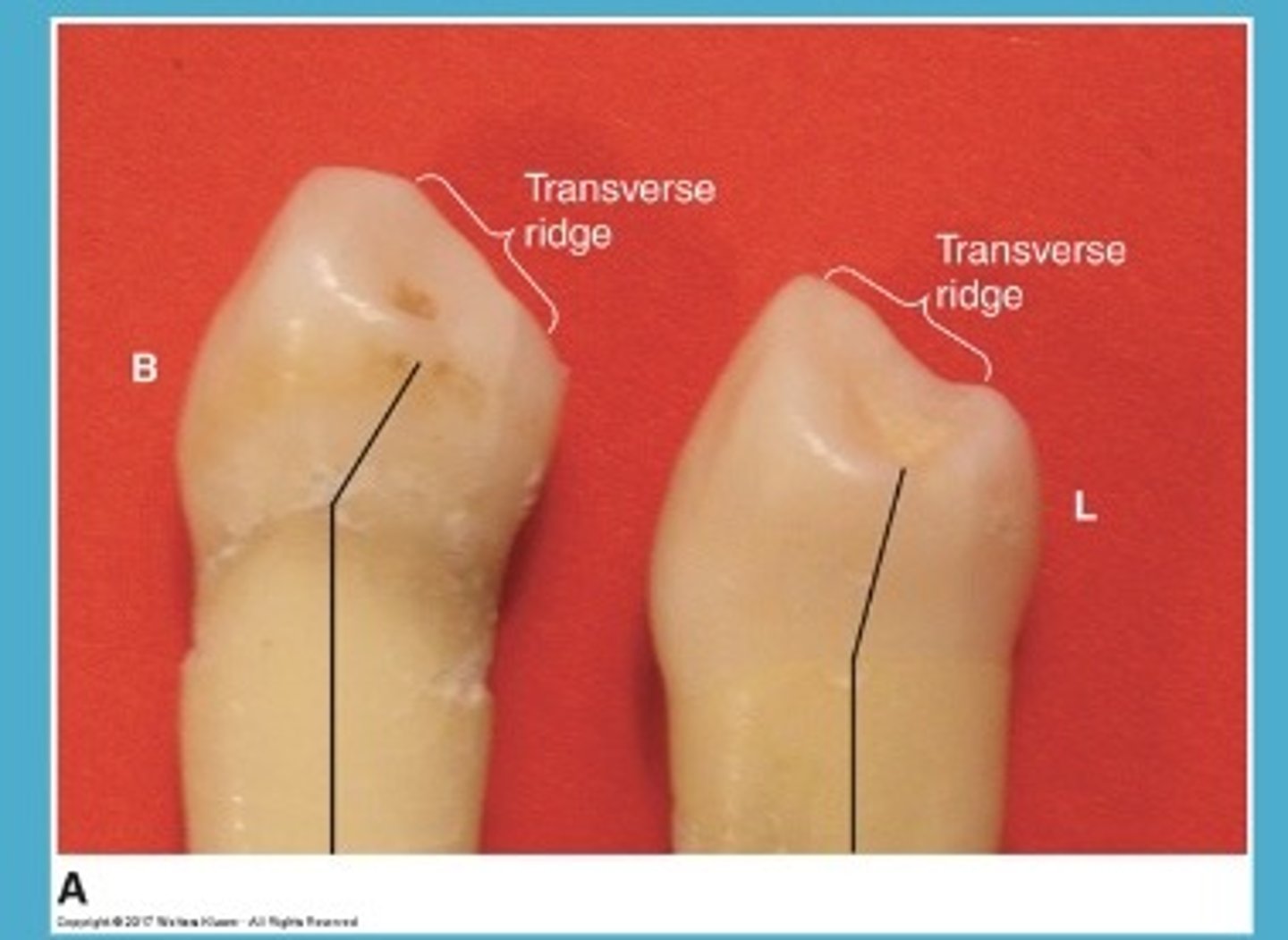
Mandibular Second Premolar - Formation
2 1/4 - 3 years
Mandibular Second Premolar - Eruption
11-12 years
Mandibular Second Premolar - Root Completion
13-14 years
Mandibular Second Premolars: basic traits
1) More variable in form.
2) May be formed from 4 or 5 lobes.
3) Y, H and U types with Y type being the most common.
Mandibular Second Premolars: coronal outline (Occlusal View)
cusp variant may diverge toward the lingual creating smaller lingual embrasures
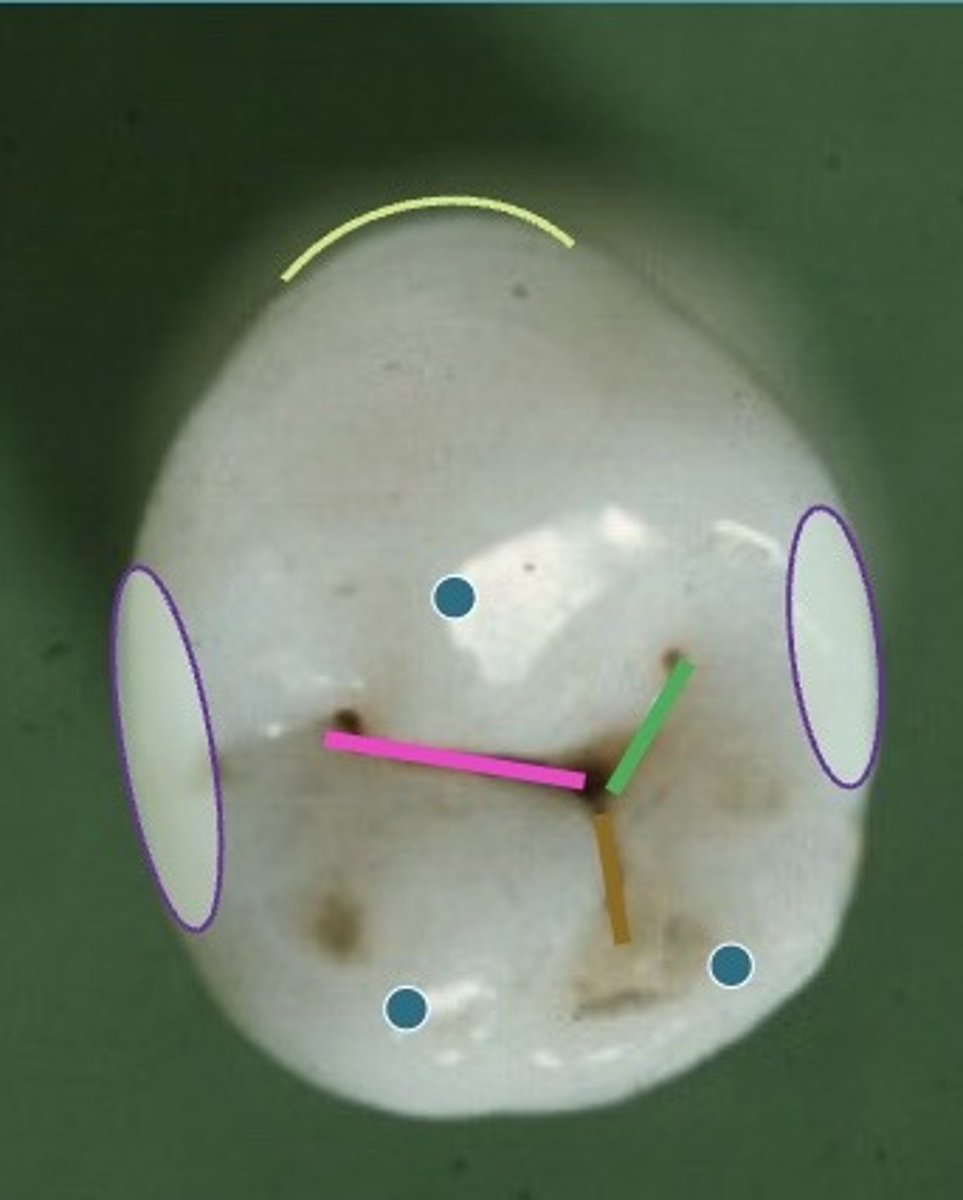
Mandibular Second Premolars: facial height of contour (Occlusal View)
prominent F height
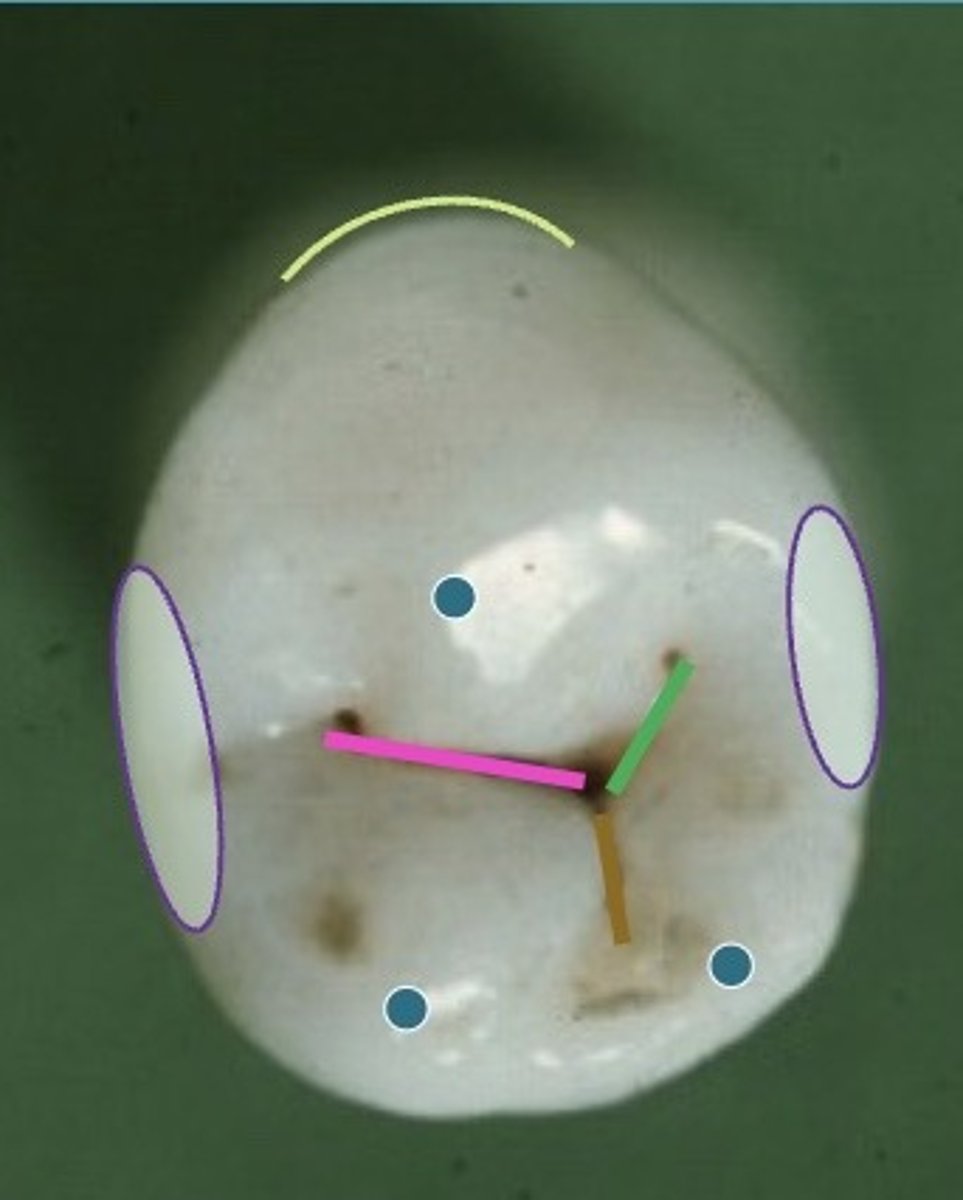
Mandibular Second Premolars: mesial and distal contact areas (Occlusal View)
broad
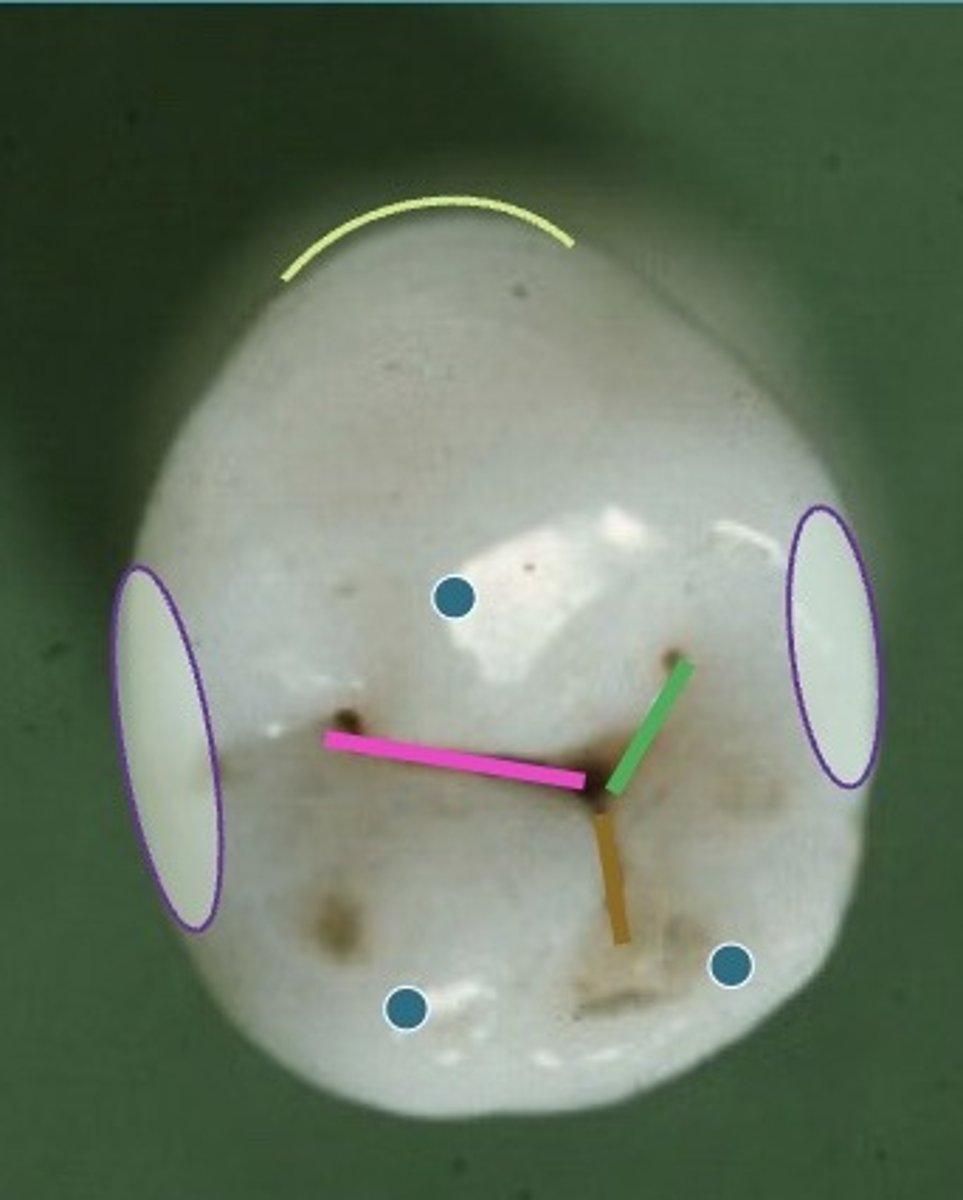
Mandibular Second Premolars: position of cusp tips (Occlusal View)
B cusp tip - M to center
ML cusp tip - M to center
DL cusp tip - D to center
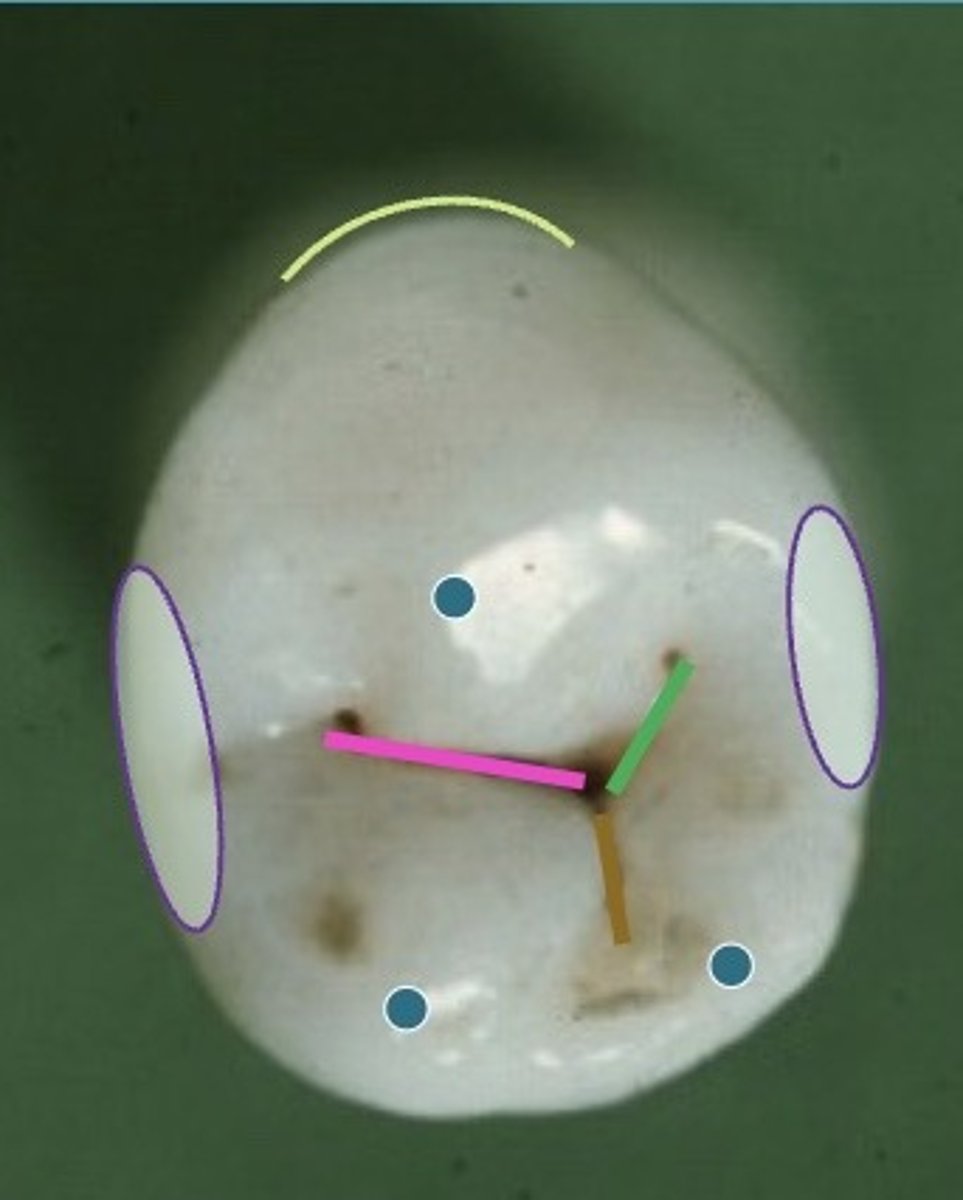
Mandibular Second Premolars: occlusal groove pattern (Occlusal View)
3 named grooves
- mesial groove
- distal groove
- lingual groove
Mandibular Second Premolars: cusp size (Occlusal View)
B> ML> DL
* ML > DL will help you identify right and left.
U and H types (2-cusp variants)
These two types are usually formed from 4 lobes, not 5 (so: 2 cusps)
Lingual cusp located M to center
Occlusal groove pattern quite variable
Usually tapers slightly toward the lingual
Still have a large buccal cusp.
Still have broad M and D contact areas

Mandibular Second Premolars: cusp (Buccal View)
1 large cusp
cusp tip M to center

Mandibular Second Premolars: CEJ (Buccal View)
still curves but not as much as the teeth anterior to it
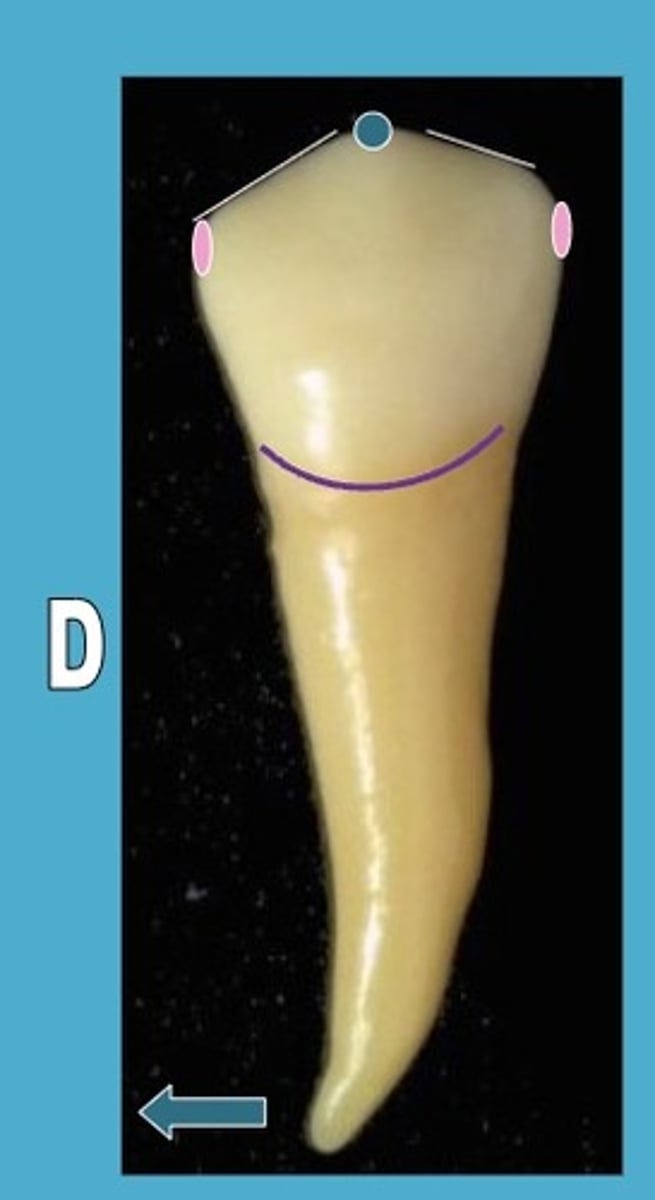
Mandibular Second Premolars: Root (Buccal View)
conical with apex often turned to the distal
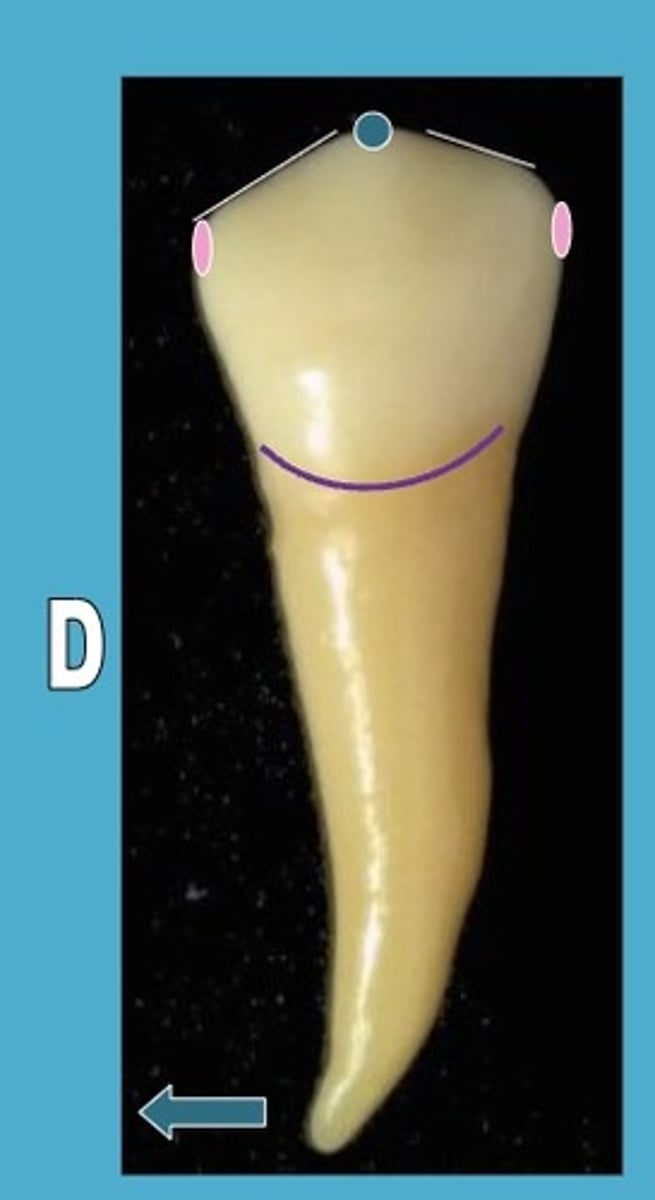
Mandibular Second Premolars: mesial marginal ridge (Buccal View)
mesial MR is higher/more occlusal in crown than distal MR
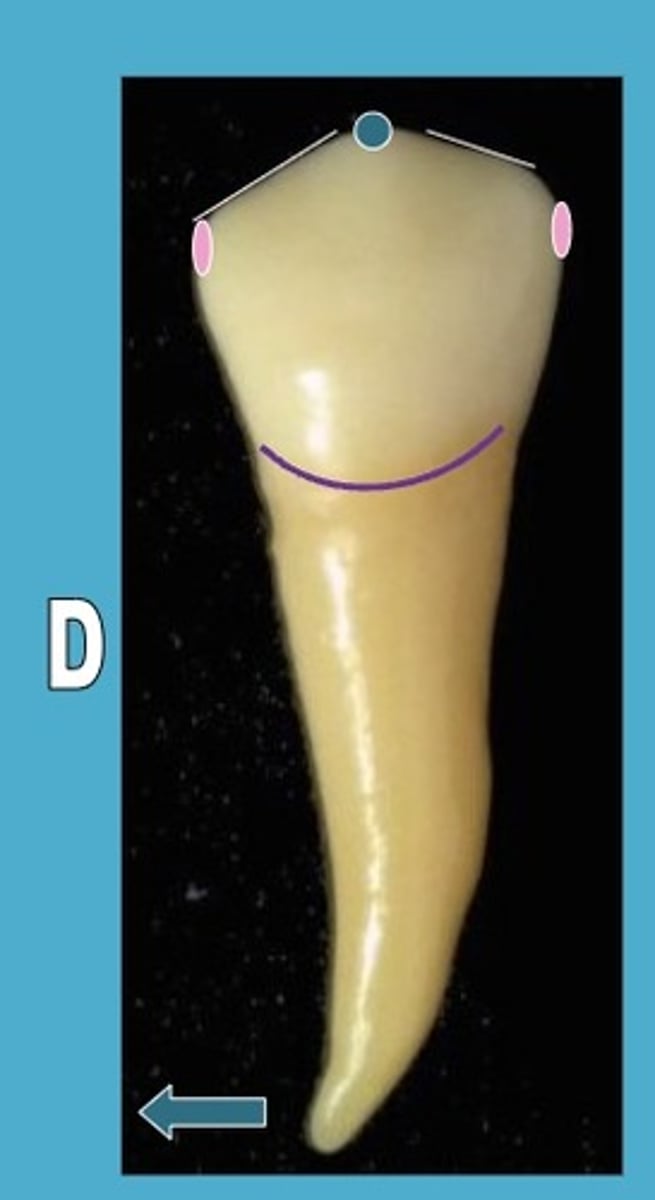
Mandibular Second Premolars: mesial and distal contacts (Buccal View)
near the junction of the occlusal and middle thirds of the crown

Mandibular Second Premolars: ML Cusp (Lingual View)
ML cusp LARGER than DL cusp (if DL cusp is present)
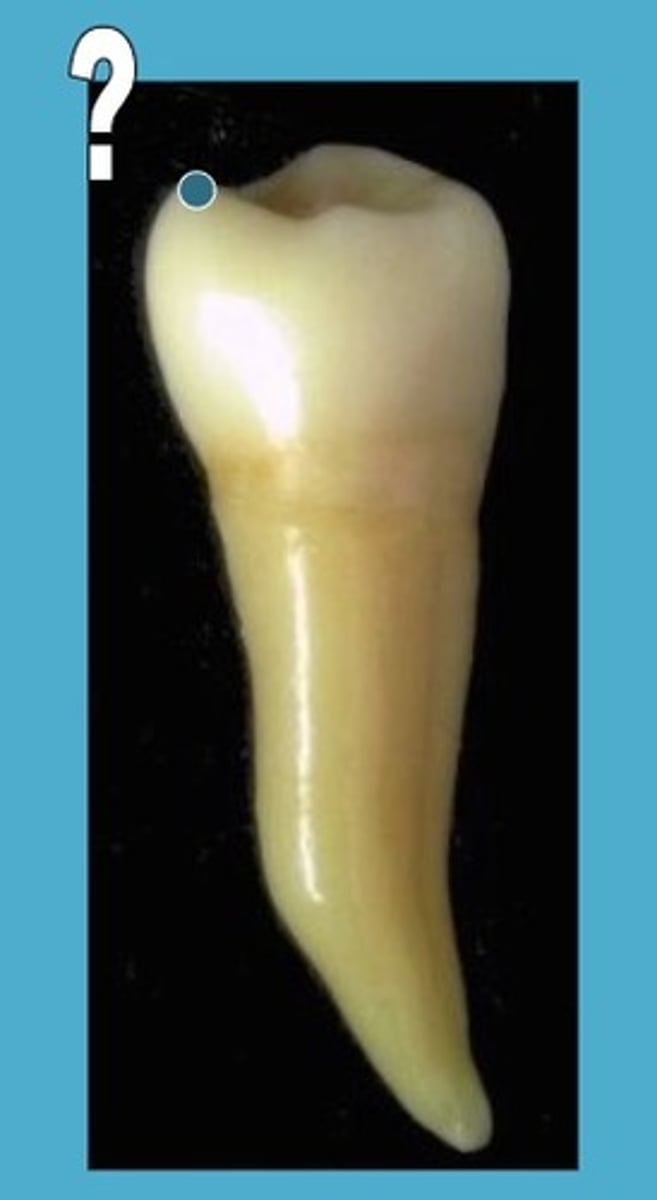
Mandibular Second Premolars: CEJ (lingual view)
relatively flat
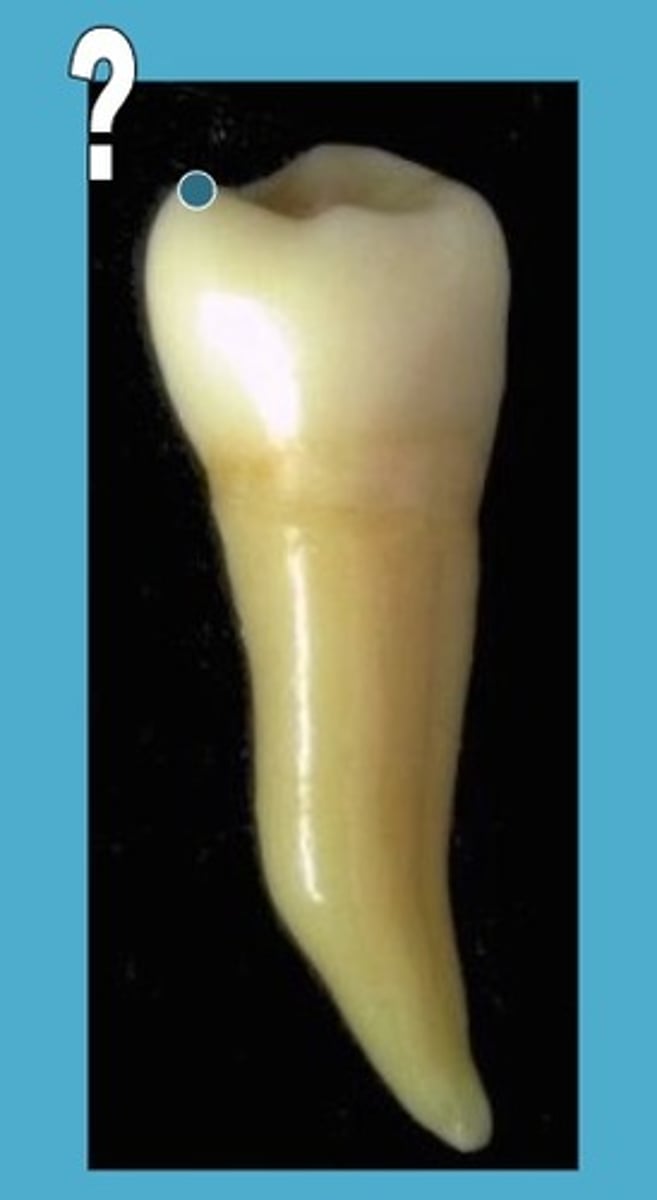
Mandibular Second Premolars: root (lingual view)
usually tapers slightly to the lingual
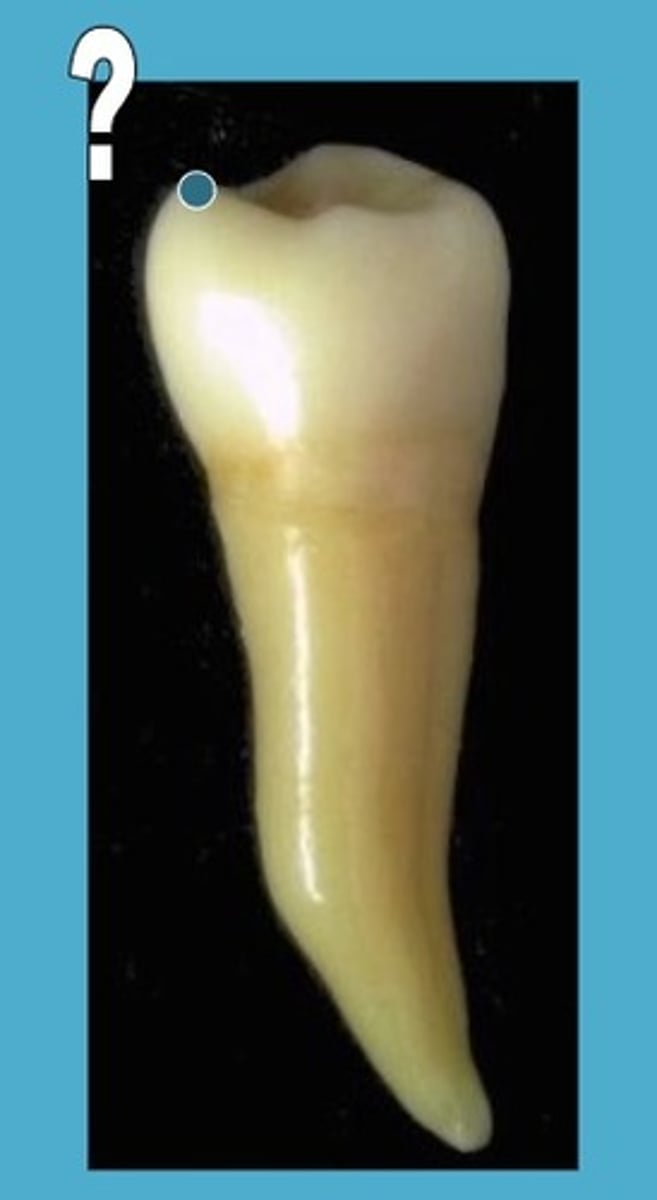
Mandibular Second Premolars: buccal cusp tip position (proximal view)
less lingual crown tilt
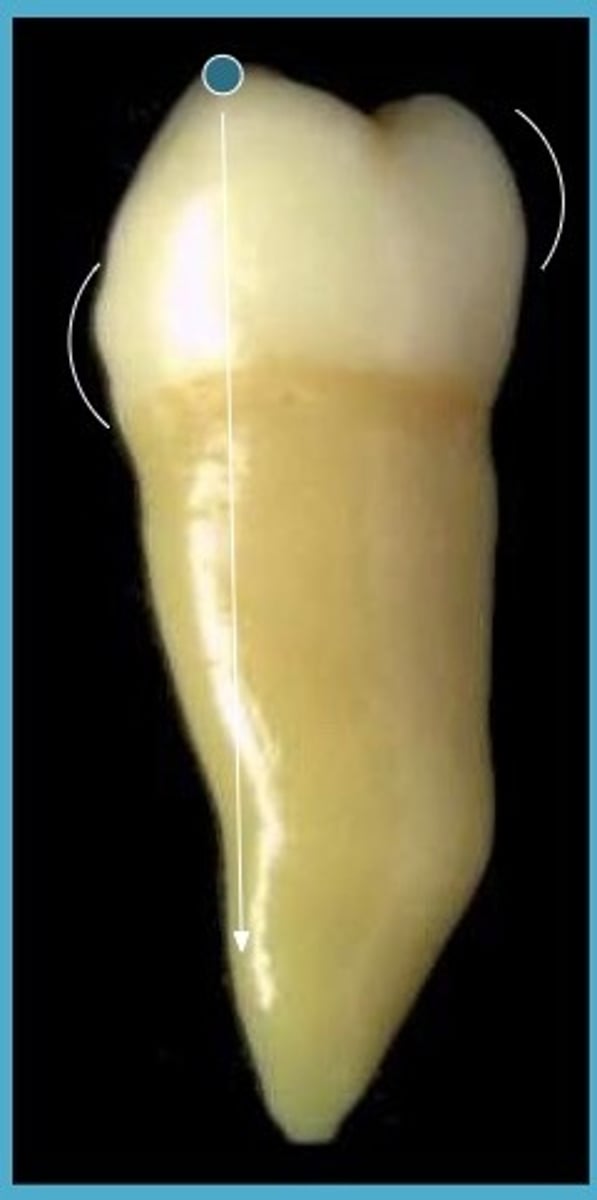
Mandibular Second Premolars: CEJ (proximal view)
CEJ is flattened
Mandibular Second Premolars: Buccal and Lingual Heights of Contour (proximal view)
B: near the junction of the cervical and middle 1/3's
L: middle 1/3
Crown tilt: mandibular 1st vs 2nd premolars (see photo)
